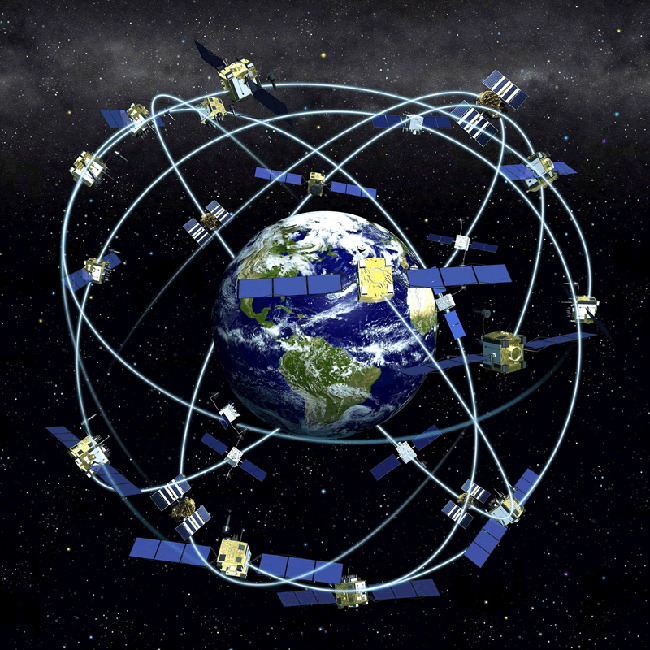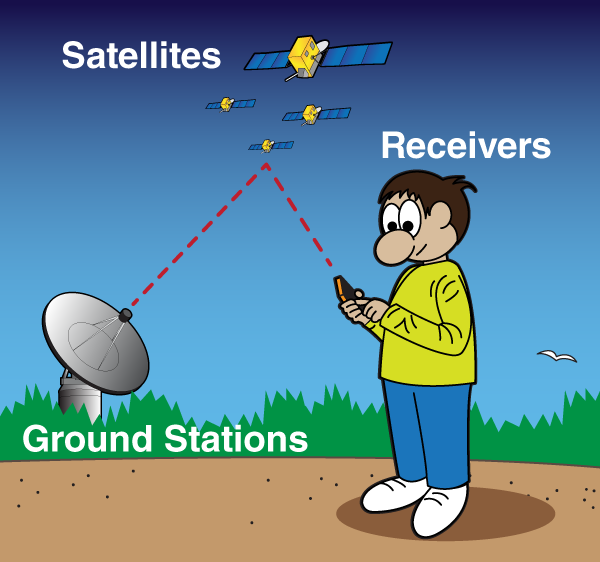Humans have looked to the skies to find their way since ancient times. Ancient sailors used the constellations in the night sky to figure out where they were and where they were going.
Today, all we need is a simple hand-held GPS (short for Global Positioning System) receiver to figure out exactly where we are anywhere in the world. But we still need objects high in the sky to figure out where we are and how we get to other places.
Instead of stars, we use satellites. Over 30 navigation satellites are zipping around high above Earth. These satellites can tell us exactly where we are.
What is GPS?
GPS is a system. It’s made up of three parts: satellites, ground stations, and receivers.
Satellites act like the stars in constellations—we know where they are supposed to be at any given time.
The ground stations use radar to make sure they are actually where we think they are.
A receiver, like you might find in your phone or in your parents car, is constantly listening for a signal from these satellites. The receiver figures out how far away they are from some of them.
Once the receiver calculates its distance from four or more satellites, it knows exactly where you are. Presto! From miles up in space your location on the ground can be determined with incredible precision! They can usually determine where you are within a few yards of your actual location. More high-tech receivers, though, can figure out where you are to within a few inches!
The ancient sailors of history would be flabbergasted by the speed and ease of pinpointing your location today.
GPS in everyday life
There’s a whole lot of important things GPS is used for—but perhaps nothing is more important than finding the quickest slice of pizza! Check out our fun Space Place in a Snap animation “GPS and the Quest for Pizza” to learn more about how GPS works.



Comments
Post a Comment